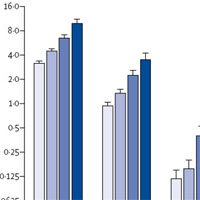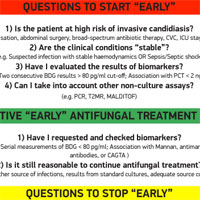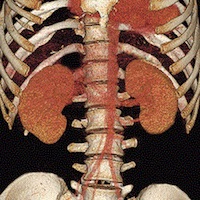Tag: morbidity

Mortality and Cardiovascular and Respiratory Morbidity in Individuals with Impaired FEV1 (PURE)
The associations between the extent of forced expiratory volume in 1 s (FEV1) impairment and mortality, incident cardiovascular disease, and respiratory hospitalisations are unclear, and how these associations might vary... read more

Repeated Ambulance Use is Associated with Chronic Diseases
There is a growing demand for emergency medical services (EMS) and patients are repeatedly transported by ambulance services. For many patients, especially those with chronic disease, there may be better ways of delivering... read more

Effect of position and positive pressure ventilation on functional residual capacity in morbidly obese patients
In awake morbidly obese volunteers, an increase in the FRC is observed when spontaneous ventilation at zero inspiratory pressure is switched to positive pressure. Compared with S positioning, the BC position had no measurable... read more

Antifungal Treatment in the ICU
Invasive fungal infections (IFIs) are a major cause of morbidity and mortality in critically ill patients. Almost 80% of IFIs are due to Candida spp., which are the third most common isolated microorganisms in the intensive... read more

Mortality and Morbidity in Acutely Ill Adults Treated with Liberal vs. Conservative Oxygen Therapy
In acutely ill adults, high-quality evidence shows that liberal oxygen therapy increases mortality without improving other patient-important outcomes. Supplemental oxygen might become unfavourable above an SpO2 range of 94-96%.... read more

Intensive care in severe malaria: Report from the task force on tropical diseases by the WFSICCM
Severe malaria is common in tropical countries in Africa, Asia, Oceania and South and Central America. It may also occur in travelers returning from endemic areas. Plasmodium falciparum accounts for most cases, although P... read more

Natriuretic Peptides: A Role in Early Septic Acute Kidney Injury?
Acute kidney injury (AKI) is a common complication of critical illness and is associated with significant morbidity, mortality, and financial cost. Sepsis is the leading association of acute kidney injury in the intensive... read more

Functional Status Change Among Children With ECMO to Support Cardiopulmonary Resuscitation in a Pediatric Cardiac ICU
This is the first extracorporeal cardiopulmonary resuscitation report to examine changes in Functional Status Scale from admission (baseline) to discharge as a measure of overall functional outcome. Half of surviving patients... read more

Providing Psychological Support to People in Intensive Care
The Provision Of Psychological support to People in Intensive Care (POPPI) psychological intervention to reduce acute patient stress in critical care and prevent future psychological morbidity was feasible and acceptable.... read more

Mitochondrial Function in Sepsis
The authors were tasked with developing five specific questions regarding mitochondrial function in sepsis within the context of the Acute Dialysis Quality Initiative 14 (ADQI XIV) meeting held in Bogotá, Colombia, in late... read more

Collective Quality Improvement in the Pediatric Cardiology Acute Care Unit
Collaborative quality improvement and learning networks have amended healthcare quality and value across specialities. Motivated by these successes, the Pediatric Acute Care Cardiology Collaborative (PAC3) was founded in... read more

Peer Support in Critical Care
Peer support appeared to reduce psychologic morbidity and increase social support. The evidence for peer support in critically ill populations is limited. There is a need for well-designed and rigorously reported research... read more

The Relationship Between ICU Hypotension and In-hospital Mortality and Morbidity in Septic Patients
Current guidelines recommend maintaining a mean arterial pressure (MAP)≥ 65 mmHg in septic patients. However, the relationship between hypotension and major complications in septic patients remains unclear. We, therefore,... read more

Sepsis-3, a New Definition. Solutions or New Problems?
Before we can discuss the "Sepsis-3" definitions, we need to look back at the history of Sepsis definitions, and what the rationale was leading the authors to create a new definition. Below is a brief, albeit non-exhaustive,... read more




